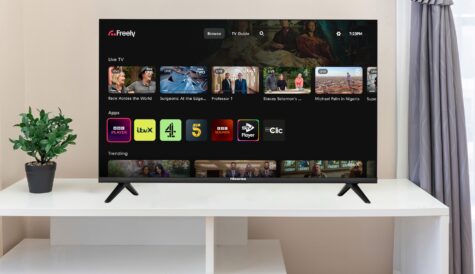Viaplay: adjusting aim to hit the target
 There have been some signs of late that the second tier of streaming platforms below giants Netflix and Disney+ are stuttering. Huge cuts at Warner Bros. Discovery and uncertainty about the direction of its streaming strategy internationally are now well documented, while smaller player Lionsgate recently decided to pull its recently rebranded streamer Lionsgate+ from seven big international markets.
There have been some signs of late that the second tier of streaming platforms below giants Netflix and Disney+ are stuttering. Huge cuts at Warner Bros. Discovery and uncertainty about the direction of its streaming strategy internationally are now well documented, while smaller player Lionsgate recently decided to pull its recently rebranded streamer Lionsgate+ from seven big international markets.
Some of the shine even came off European streaming star Viaplay when it reported weaker than expected performance in its core Nordic markets, despite strong international growth and a high-profile launch in the UK.
Viaplay this week confirmed its long-term strategic targets and full-year guidance and said it was addressing those weaknesses in the Nordics.
At its first Capital Markets Day to be held as a physical event since the pandemic earlier, CEO Anders Jensen this week went so far as to say that the company has “full line of site” to its target of 7.3 million subscribers by the end of this year, on the way to 12 million by 2025.
The way to get there, he said “will be a bit different” from that envisaged hitherto.
Viaplay prides itself on adapting to changing circumstances and taking advantage of the opportunities that present themselves. However, certain principles have been at the core of its success and those are unlikely to change. As probably the only clear example of a European streamer with significant international traction outside its home market, those are worth paying attention to.
Number one is an understanding that streaming is making TV more international and media outfits that ignore this shift do so at their peril.
Scale, said Jensen, is key to the success of any media company today. “To unlock value…you cannot be insignificant [in size],” he said. That does not mean service providers need the scale of the US tech giants, but it does mean they have to look at the wider market. This is particularly obvious to a company like Viaplay that hails from a relatively small market like the Nordics.
The alternatives to international growth, said Jensen, would have been to “double down on the Nordics”. However, he said, “every single data point” showed this would have been “extremely short sighted”.
He went further, arguing that those companies that restrict themselves to limited national markets will “feel the squeeze” at some point in the future.
This insight is not one that has been taken on board by all media companies. Germany’s ProSiebenSat.1 has famously doubled down on its domestic focus, to say nothing of the Anglo-Saxon parochialism of the UK’s ITV – but the limitations of this view are starting to become evident. The German broadcaster recently updated on distinctly underwhelming ad revenue numbers While ITV this week showed that it managed to ffset ad revenue declines with strong growth from its studios unit, the limitations of a reliance on the local ad market in an underperforming economy are likely soon to become evident.
Viaplay is a very different beast with a strong international outlook and a keen sense of how to differentiate its proposition.
The international outlook means its streaming services can benefit from cost synergies. Jensen said the cost of serving each subscriber had gone down thanks to its international expansion and synergies from having a core technology platform to serve a growing number of markets.
Big on sports, cautious on ads
Key to differentiation is investment in premium sports, which it has built on this as a core part of its proposition. For the UK, where the company has big ambitions and where it acquired Premier Sports, Jensen says that mid-tier sports rights have been attached to very high price points and this provides an opportunity to drive a wedge into the market. “And the Brits love Nordic content,” he added.
The sports investment is becoming more important as access to Hollywood content is becoming more limited, however much Viaplay invests in its own scripted originals. (Nevertheless, with the exception of Disney, Viaplay has managed to secure all the Hollywood content it really wants, claims Jensen.)
Building B2B partnerships is also central to Viaplay’s strategy and these are likely to be the engine for most future growth. However, ARPU is lower from distribution partnerships. As penetration increases growth will inevitably slow down and it is “crucial” to address ARPU, said Jensen. While this has driven some of the company’s downward revisions in its expectations, Jensen says that distribution agreements that might be ARPU-dilutive in the short terms are likely to pay off later.
Partnerships are in Viaplay’s case not limited to operators to further distribution. Jensen singled out Paramount’s FAST outfit Pluto TV as a key partner.
In this context, however he is notably sceptical about the launch of FAST and ad-based streaming tiers by other major streaming players. He said a FAST or AVOD launch on its own would be “immediately dilutive” for Viaplay.
In new markets, he said, Viaplay would look for similar partnerships to that with Pluto TV rather than launch an ad platform of its own based “on inferior reach” to local commercial players. He questioned whether local Swedish advertisers would pay a huge premium to be on Netflix for its ‘Basic with Ads’ offering rather than go with the known reach of traditional partners such as TV4 Play.
International or die
Viaplay is not immune from economic and other headwinds. It is struggling in the Baltics because of the cutting off of Russian content following the invasion of Ukraine, while Viaplay Select, the curated offering of Viaplay Originals and third-party content made available to distribution partners for a fixed fee, will not now be launched in Austria, Germany and Switzerland “for all the macro-financial reasons you can think of”. The company is prepared to take a step back from these big markets as a result of macroeconomic challenges.
Notwithstanding that decision, and the pressure on ad markets, Jensen says that the company will continue its international rollout, with a revised operational structure to help position itself better for the task.
Streaming, Jensen believes, will “just continue to grow” and if very far from having peaked. He points out that there is still a big opportunity to cannibalise declining linear viewing, which still accounts for a big part of TV spend. He argued that pay TV operators must move from packaging pay TV bundles to aggregating streaming services to capture an audience that is shifting to non-linear viewing.
Jensen also believes that the market is swinging in Viaplay’s favour, with the big US streamers now pulling back from international and local content to some extent and focusing more on their core US audiences.
He therefore remains confident that the company’s “international expansion is on track or ahead” while “the Nordic opportunity is intact” despite the slower growth the company has experienced recently.
No sign of stuttering here. Viaplay remains something of a best-practice example, at least for now. And the view that major media companies have to be international, or die is one that should be listened to.




